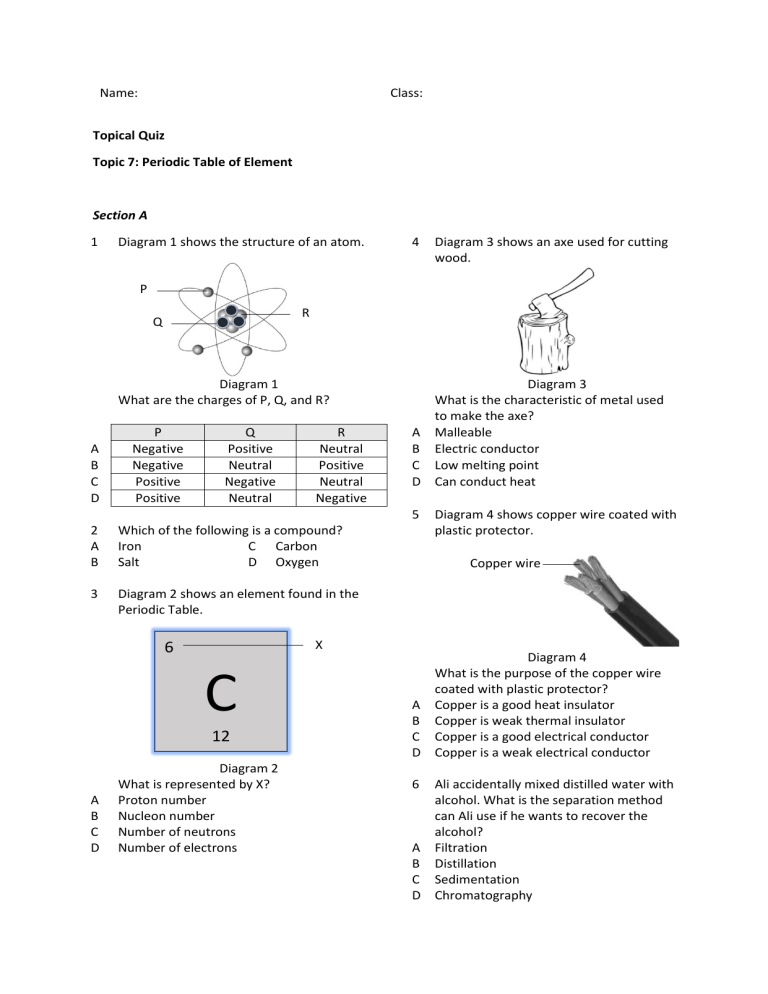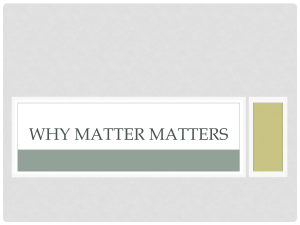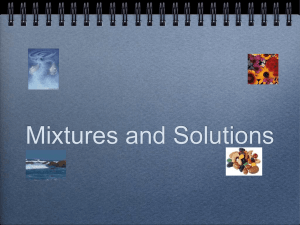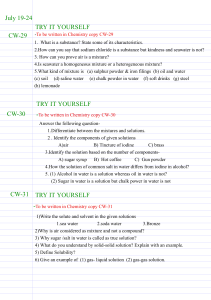
Name: Class: Topical Quiz Topic 7: Periodic Table of Element Section A 1 Diagram 1 shows the structure of an atom. 4 Diagram 3 shows an axe used for cutting wood. P R Q Diagram 1 What are the charges of P, Q, and R? A B C D P Negative Negative Positive Positive Q Positive Neutral Negative Neutral R Neutral Positive Neutral Negative Diagram 3 What is the characteristic of metal used to make the axe? A Malleable B Electric conductor C Low melting point D Can conduct heat 5 2 A B Which of the following is a compound? Iron C Carbon Salt D Oxygen 3 Diagram 2 shows an element found in the Periodic Table. X 6 C 12 A B C D Diagram 2 What is represented by X? Proton number Nucleon number Number of neutrons Number of electrons Diagram 4 shows copper wire coated with plastic protector. Copper wire Diagram 4 What is the purpose of the copper wire coated with plastic protector? A Copper is a good heat insulator B Copper is weak thermal insulator C Copper is a good electrical conductor D Copper is a weak electrical conductor 6 Ali accidentally mixed distilled water with alcohol. What is the separation method can Ali use if he wants to recover the alcohol? A Filtration B Distillation C Sedimentation D Chromatography 7 Diagram 5 shows a beaker containing a mixture of chalk powder and water. Mixture of chalk powder and water A B C D Diagram 5 Why can the mixture be separated? Water is denser than chalk powder Water has higher melting point than chalk powder Chalk powder is insoluble in water and denser than water Chalk powder has a lower boiling point than water 9 I II III IV Choose the correct examples of chemical changes. Photosynthesis Condensation Water boiling Rusting of iron A B C D I and II III and IV II and III I and IV 10 Which of the following is matched correctly? A 8 Diagram 6 shows a method to separate a compound. B Water + Sulphuric acid Electrode C Battery I II III IV A B C D Diagram 6 Which of the following statements are true? Hydrogen gas is produced at the negative electrode Oxygen gas is produced at the cathode Hydrogen gas is produced at the anode Water consists of the combination of hydrogen and oxygen I and II III and IV II and III I and IV Physical change Chemical change Forms a new substance Does not form a new substance The properties of the substances and products are different The chemical composition of the substances and products remain the same The properties of the substances and products remain the same The chemical composition of the substances and products are different Needs more energy Needs less energy D Section B 1 (a) Diagram 1 shows the particles contained in two types of substances, R and S. (2 marks) R: S: Diagram 1 Label substances R and S by using the words given below. Mixture Element Compound (b) Mark (✓) two differences between substance R and S.(2 marks) (i) Substance R can be separated physically whereas substance S cannot be separated physically. (ii) There is no new substance formed in substance R whereas a new substance is formed in substance S. (iii) Formation of substance R needs more energy whereas formation of substance S needs less energy. (iv) The ratio of elements in substance R is fixed whereas the elements in substance S can present in any ratios. 2 (a) Fill in the blanks with the correct answers. (2 marks) (i) Zinc is strong, and it is used in making ______________________. (ii) Iodine is used as _______________________ to prevent injuries from bacterial infection. (b) Match the following substances with their correct characteristics. (2 marks) Substance Characteristic Has a high boiling point To decolorise colour Strong and malleable Section C 3 (a) Diagram 2.1 shows a type of fertiliser containing substance T. Diagram 2.1 Based on Diagram 2.1, explain why substance T is classified as a compound. (2 marks) (b) Diagram 2.2 shows a beaker containing liquid U. Substance T Diagram 2.2 Based on Diagram 2.2, explain why liquid U is categorised as mixture. (2 marks) (c) Diagram 2.3 shows an electrical technician is testing the presence of electric current in a socket by using a test pen. Diagram 2.3 Explain briefly how the electrical technician can avoid electrical shock when testing a socket. (2 marks) (d) Naufal put a mixture of muddy water into a bottle. The mixture is left for about 30 minutes. Diagram 2.4 shows his observation after 30 minutes. Mud Diagram 2.4 (i) Name the process shown in the above diagram. (1 mark) (ii) If the mud is replaced with chalk powder, can the mixture be separated by using the method above. Explain why. (2 marks) (iii) Explain why a mixture of fine salt and water cannot be separated using the method above? (1 mark)





